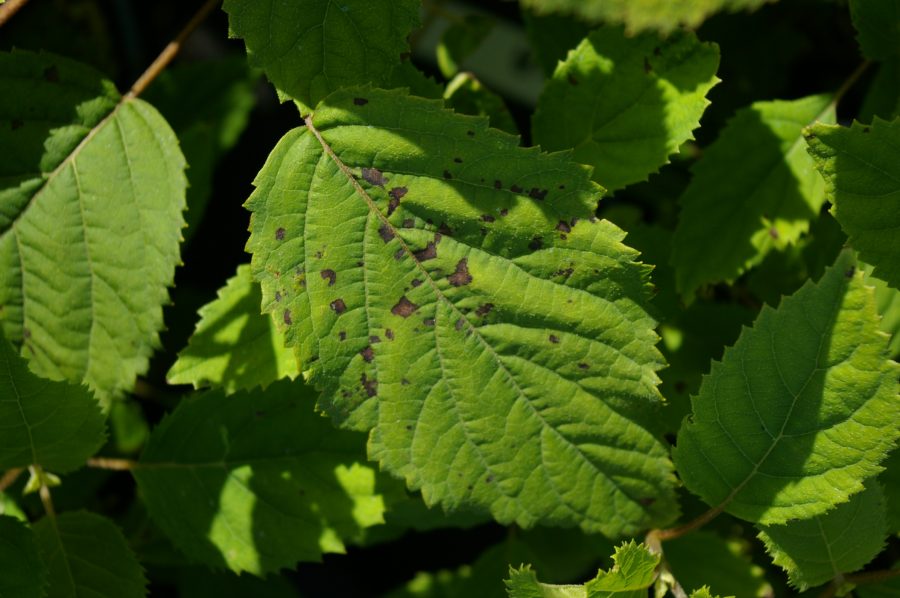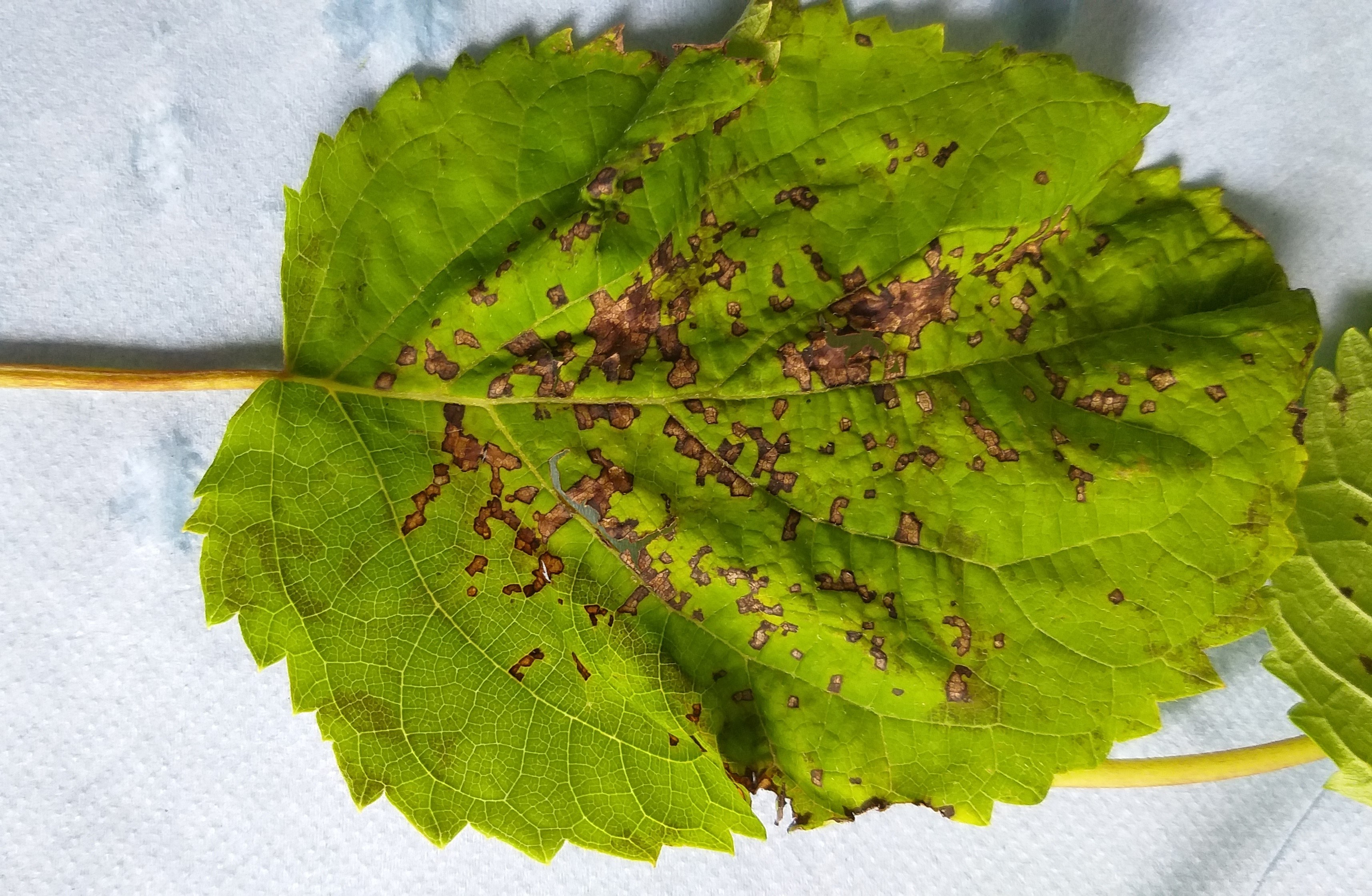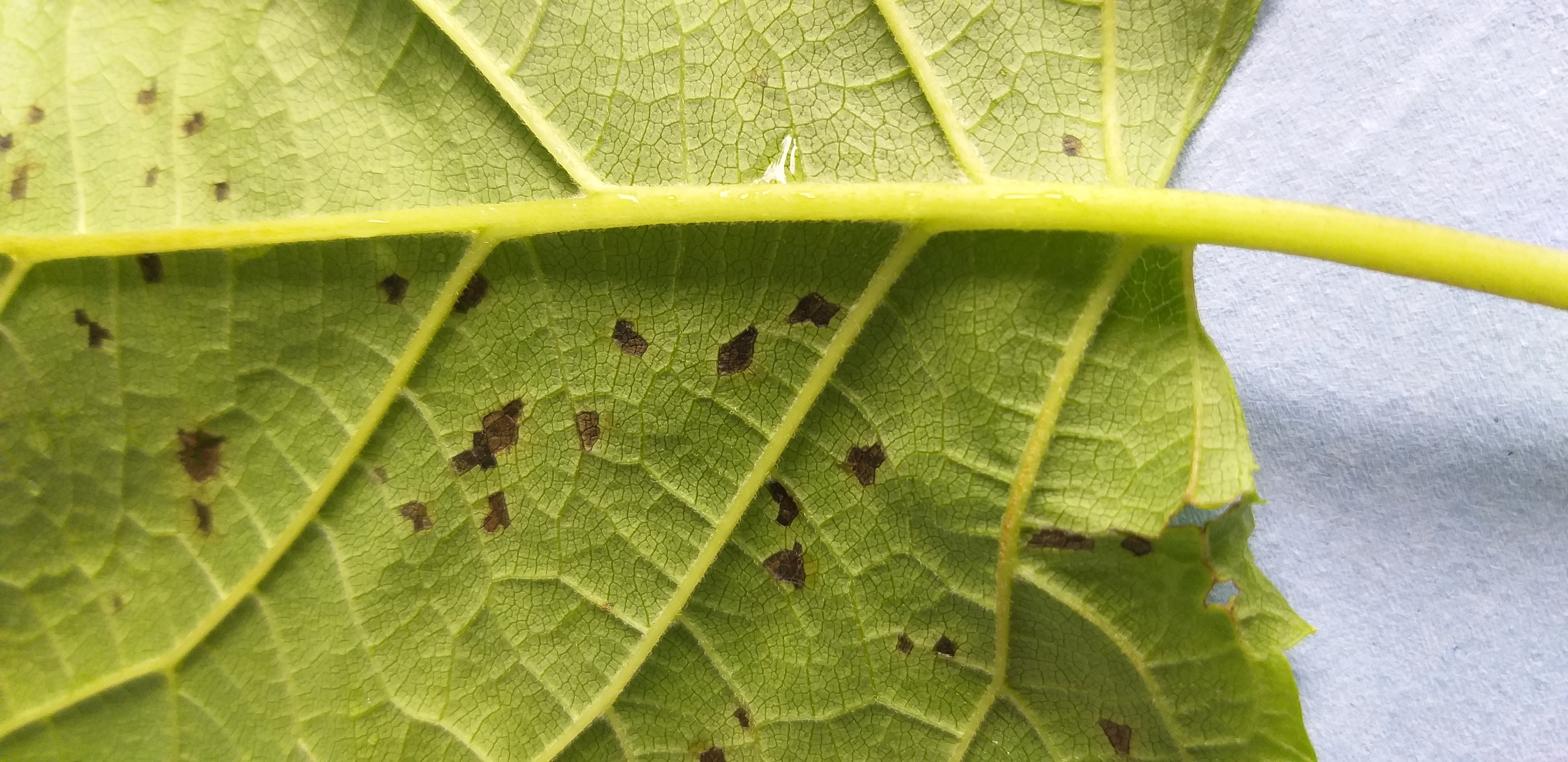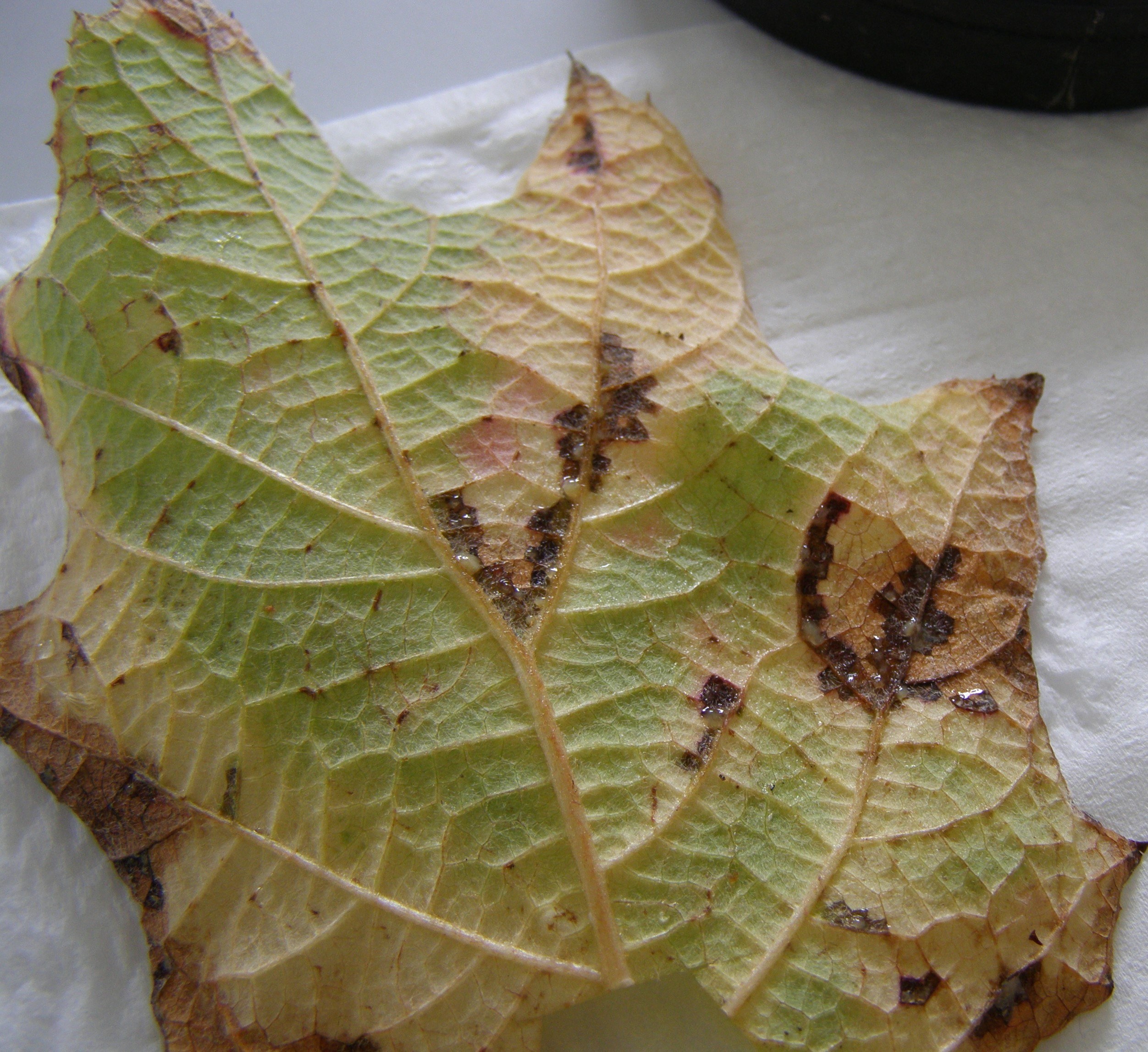News Plant attacker of the month: Xanthomonas hydrangeae, cause of leaf spots on Hydrangea arborescens

In late summer 2011, the Diagnostic Centre for Plants (DCP) was asked to investigate the cause of leaf spots on propagation material from different cultivars of snowball hydrangea (Hydrangea arborescens). Clear signs of infestation were present in the nursery at both the propagation and the container cultivation areas. [photo 1 and photo 2]. In subsequent years, the disease was detected at several other nurseries as well as on the oak leaf hydrangea (Hydrangea quercifolia [photo 3].
Hydrangea (better known as Hortensia in Belgium, the Netherlands and France) has become much more popular in gardens over the last decade. In northern Europe the cultivars ‘Annabelle' and ‘Incrediball' (with a white flower bulb) and ‘Invincibelle' (with a pink flower bulb) are very popular. Hydrangeas are real eye-catchers with a decorative growth habit and spectacular flowers in a variety of surprising shades of color. ILVO’s Hydrangea paniculata cv. Pinky Winky is distributed worldwide by the BEST-select cooperative. The Pinky Winky blooms from early summer with white flowers that show a soft pink blush starting in early August, after which a red glow slowly creeps up over the entire flower cluster until it is completely red. But let’s get back to those leaf spots...
Leaf spot disease mainly affects Hydrangea arborescens. Leaf spots are a typical bacterial phenomenon. They start as small oil spots on the underside of the leaves and continue to grow into angular brown-black spots between the leaf veins. As the infection progresses, individual spots fuse into larger spots that rupture the leaf tissue.
The masses of bacteria in the spots are isolated in yellow colonies on culture medium and are identifiable as Xanthomonas. Using the common DNA code, the bacteria were initially identified as Xanthomonas hortorum. That bacterial species is well known as a pathogen on garden plants and vegetables, including tomato, carrot, artichoke, lettuce, pelargonium and ivy. Leaf and fruit spots are the typical disease pattern of Xanthomonas hortorum. In Pelargonium, xylem infestation also causes wilting and desiccation because the infestation disrupts water transport to the leaves.
There are many variants within Xanthomonas hortorum, thus the so-called 'pathovar system' was introduced to help distinguish them from each other. A pathovar (pv.) is a group of bacterial strains in a bacterial species that infects a specific botanical family. For example, the strains infecting ivy were placed in the pv. hederae and those infecting lettuce in the pv. vitians. However, it subsequently became clear that the natural range of susceptible plant species (the 'host range') of a pathovar is wider than initially assumed. Together, the pathovars in Xanthomonas hortorum now infect 65 plant species in 15 botanical families, even uncultivated plants such as dandelion (pv. taraxaci). And there are also bacterial strains in Xanthomonas hortorum that have not yet been assigned to a pathovar, such as these from peony, wormwood and lavender.
The Xanthomonas isolates from Hydrangea arborescens and Hydrangea quercifolia also form a separate group in Xanthomonas hortorum that is clearly distinct from the known pathovars. Analysis of the genome sequences allowed them to be considered as a new bacterial species named Xanthomonas hydrangeae. So far, the disease has not been observed on Hydrangea paniculata or Hydrangea macrophylla. Even after inoculation no leaf spots were observed on those species.
The bacterium was likely introduced to Europe from North America. Hydrangea arborescens is native to the southern and midwestern United States. In the 1990s, bacterial leaf spots of Xanthomonas were reported on oak leaf hydrangea in the state of Georgia. This was possibly the same bacterial species but those bacterial cultures were lost. The propagation material from the first finding in 2011 in Flanders did originate from the US, however.
Xanthomonas hydrangeae is only harmful on the leaves. Hydrangea arborescens is a deciduous shrub, so diseased leaves fall off. The bacterium can survive in the fallen leaves and is then deposited on young leaves in spring via splashing water. Removal of fallen leaves is therefore important to avoid reinfection.
Moisture determines the life of the bacteria on the plant surface. Tilling wet plants greatly increases the risk of infection. Moisture is also necessary for infection, which occurs mainly along the stomata. Keeping the leaf surface dry or ensuring that it dries quickly after irrigation greatly reduces the infection rate.
Bacteriological research at ILVO has shown that Xanthomonas hydrangeae can also survive in resting buds of Hydrangea arborescens. This can explain how the bacterium may spread from one nursery to another while undetected in propagating material without symptoms. Tackling the bacterium would therefore best begin as soon as the dormant buds awaken. The aim is to rein in the multiplication of the bacterium to keep the numbers below the infection threshold. No organic bactericides are recognized so the (organic) grower must use a plant protection product containing copper.
The presence of bacterial leaf spot severely affects the trade and export of Hydrangea arborescens and Hydrangea quercifolia. The UK, a major customer, has already refused several shipments from Flanders. Shipments from nurseries in the Netherlands and Germany were also rejected by the UK import inspection. This is more than reason enough to devote attention to tackling the presence of Xanthomonas hydrangea in Flemish nurseries.




References
Cottyn B, De Paepe B, Dia NC, Van Malderghem C, Pothier JF & Van Vaerenbergh J. 2021. First report of bacterial leaf spot of Hydrangea in retail nurseries in Belgium caused by strains assigned to a new Xanthomonas hortorum clade. New Disease Reports 43:e10002. [doi:10.1111/ndr2.108]
Dia NC, Van Vaerenbergh J, Van Malderghem C, Blom J, Smits THM, Cottyn B & Pothier JF. 2021. Xanthomonas hydrangeae sp. nov., a novel plant pathogen isolated from Hydrangea arborescens. International Journal of Systematic and Evolutionary Microbiology 71
[doi: 10.1099/ijsem.0.005163. PMID: 34913859.
Dia NC, Morinière L, Cottyn B, Bernal E, Jacobs JM, Koebnik R. Osdaghi E, Potnis N & Pothier JF. 2022. Xanthomonas hortorum – beyond gardens: current taxonomy, genomics, and virulence repertoires. Molecular Plant Pathology 23: 597– 621.
[doi:10.1111/mpp.13185]
Uddin W, McCarter SM & Gitaitis RD. 1996. First report of oakleaf hydrangea bacterial leaf spot caused by a pathovar of Xanthomonas campestris. Plant Disease 80: 599.
[doi:10.1094/PD-80-0599B]
 Diagnostic Centre for Plants
Diagnostic Centre for Plants
